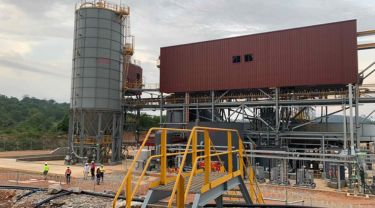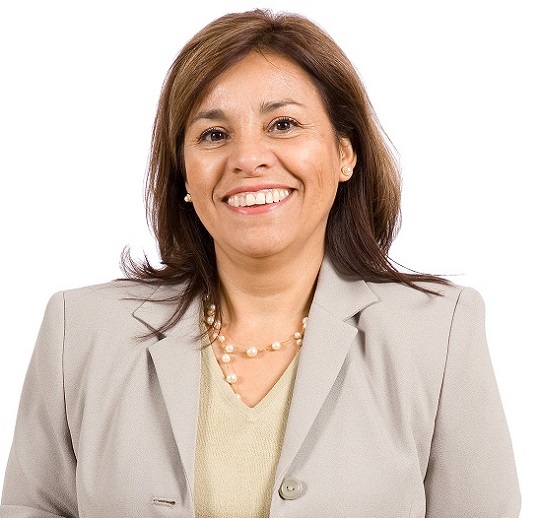In this article:
- Supporting the critical minerals supply chain
- How Canadian cleantech is improving mining sustainability
- Building trust with sustainable mining solutions
- Exporting Canadian mining technology to global markets
- Export success strategies for Canadian companies
- Focused on the future of mining
- Canadian cleantech with global impact
With demand for critical minerals surging worldwide, mining companies are under increasing pressure to reduce environmental risks and improve sustainability.
Vancouver’s CEC Mining Systems (CEC) is meeting that challenge with its ceramic disc filtration system that reduces water usage and helps protect the environment. The Canadian exporter’s mining cleantech solutions are advancing innovation and responsibility in global mining.

Supporting the critical minerals supply chain
As demand for critical minerals, like lithium, copper and nickel, grows, Canada’s Critical Minerals Strategy focuses on scaling mining projects responsibly and sustainably.
“This is where Canada’s strength in developing clean technologies really shines,” says Al Pritchard, EDC’s director of Sectors and International Advisory. “CEC’s technology is a perfect example of how cleantech can help mining companies meet environmental goals while scaling responsibly.”
In 2024, EDC facilitated $7.6 billion in business within Canada’s mining and metals sector, supporting nearly 400 Canadian suppliers, technology developers and operators, including CEC.
Co-founded in 2012 by Cameron Stockman, CEC’s filtration technology supports water recycling in mining, helping companies:
- reduce water use;
- improve tailings (the waste material left over from mining operations after valuable minerals or metals have been extracted); and
- meet environmental, social and governance (ESG) goals.
Their approach highlights how Canadian engineering has an impact not just on what we mine, but how we mine.
Join the conversation at EDC’s Cleantech Export Summit on Oct. 7, 2025, and get more global growth insights from Cameron Stockman.
How Canadian cleantech is improving mining sustainability
Mining operations use a lot of water to process minerals and much of that water ends up mixed with waste in tailings ponds—engineered structures designed to safely store byproducts of mining operations and prevent contamination of nearby land and water.
Over the past decade, investors have become more focused on the environmental risk and long-term liability of tailings ponds.
“They’re asking different questions about what sort of unsecured liabilities exist within their portfolio and looking for a better understanding of the total cost of ownership of an asset,” Stockman explains.
When CEC was founded, it often seemed “as if a profitable and an environmentally safe and efficient project were almost at odds with one another,” he says. “We were advocating that these things aren’t necessarily mutually exclusive.”
Innovative tailings management technology
CEC’s ceramic disc filtration systems separate solids from liquids in mining waste, so the water can be cleaned, reused and returned to the concentrator (where the ore is processed), reducing the demand for fresh water.
The remaining solids can then be stored using a method called dry stacking, where filtered tailings are stored in a stable, dry form instead of liquid-filled ponds. This makes the waste more stable and less likely to cause environmental damage.
Building trust with sustainable mining solutions
CEC’s technology is about more than just efficiency. “The largest risk to project development is social licence,” Stockman says. That means mining companies need to gain and retain the support of local communities, governments and stakeholders, he says.
In regions where water is scarce, like Latin America, being able to reuse water instead of competing for it is a major advantage.
Stockman says their technology allows “project developers to come to the table with creativity and have more options available to discuss with communities and governments.”
We’ve been a big user and supporter of the Business Connections Program. Certainly over the tune of $5 million—probably higher—in sales directly facilitated through EDC’s B2B connections.
Exporting Canadian mining technology to global markets
CEC exemplifies the success of Canadian exporters in mining technology, proving how homegrown innovations can have a global impact.
The company’s first project wasn’t in Canada—it was in Brazil. Stockman moved to Belo Horizonte in 2014 to lead an iron ore project, despite not knowing the language or market. The company then expanded into Mexico, Peru, Chile, Colombia and sub-Saharan Africa.
How EDC helped CEC enter new markets
Their success in Latin America was supported by EDC’s Business Connections Program, which helps Canadian companies, like CEC, connect with international buyers, including some of the world’s largest mining firms.
“We’ve been a big user and supporter of the Business Connections Program. Certainly over the tune of $5 million—probably higher—in sales directly facilitated through EDC’s B2B connections,” Stockman says.
These introductions helped CEC build trust and credibility in new markets, opening the door to future growth. Today, the company exports to more than a dozen countries and is actively pursuing opportunities in Australia, Türkiye, Malaysia and the Gulf countries in the Middle East.
“We need to have a fairly large geographical presence to build enough of a pipeline to survive and to grow,” Stockman explains. “Diversification beyond Canada’s border is a big part of how we sustain the development of our pipeline of projects.”
You should also check out
Discover trends in ores and metals, nuclear energy, and the auto, cleantech and services sectors.
Securing mining contracts with letters of credit
One of CEC’s biggest milestones came with a major project in West Africa. To meet the buyer’s requirements, CEC needed to issue a letter of credit, a financial guarantee that was mandatory for the deal.
EDC’s Account Performance Security Guarantee (APSG) provided a 100% guarantee to CEC’s bank, so it could issue the letter of credit without needing collateral. This freed up working capital and helped the company secure their largest contract to date.
It’s a valuable tool for exporters bidding on large international contracts where financial guarantees are a must. “We’re a big fan and a big supporter of both the products and services that EDC offers,” Stockman says.
How credit insurance helped fuel R&D
EDC’s trade credit insurance also helped CEC manage risk by protecting them if a foreign buyer didn’t pay, whether due to insolvency, political instability, or other issues. Their policy included work-in-progress coverage, protecting costs incurred before delivering a product.
“The ability to put that insurance policy in place has allowed us to open and maintain a working capital facility with our bank,” Stockman says.
This allowed the company to invest in research and development (R&D) and open a 7,000-square-foot facility in Kamloops, BC.
The maple leaf probably has a better reputation than people think.
Export success strategies for Canadian companies
Stockman’s advice to other companies looking to grow through exports? Think differently.
- Go beyond distributors: “The general approach from Canadian companies is to find an agent or distributor in a foreign country and piggyback off their relationships,” Stockman says. “That’s easier, but over the medium- and long-term, less advantageous for brand awareness and real core skills development.”
- Focus on cultural and operational fluency: “There’s only one rule at CEC—you need to speak a second language to work here,” Stockman says. “That’s by design, to ensure we’ve got the skill set and cultural knowledge to be successful in these markets.”
- Build on Canada’s reputation: “The maple leaf probably has a better reputation than people think,” Stockman says. He attributes this to Canada’s business culture: “We pay our bills on time, we have ethical compliance, anti-bribery and corruption policies. These sorts of cultural nuances are important for doing business abroad.”
Focused on the future of mining
CEC is investing in product and process diversification, with four R&D projects underway. Stockman says they’re working on services, like advanced control systems, internet connectivity and preventative monitoring, to better serve customers.
The company is also future-proofing its operations by diversifying supply chains, expanding into new regions and building trusted relationships. “We don’t want to be beholden to one country’s supply chain,” Stockman says. “That’s one thing that everyone has learned in the past 12 months.”
Canadian cleantech with global impact
As Canada advances its critical minerals strategy, companies like CEC Mining Systems, are proving that innovation doesn’t just come from producers—it comes from the suppliers who enable more sustainable mining.
By combining innovation, sustainability and strategic support, CEC has grown from a startup to an exporter making a difference in the mining industry.
Find out how other Canadian exporters are succeeding globally.
Sign up for EDC’s newsletter for insights, events and resources delivered to your inbox.
EDC service used
EDC Portfolio Credit Insurance

EDC Portfolio Credit Insurance is an online solution that’s ideal if you’re looking to insure your receivables against non-payment.
It covers up to 90% of insured losses should your customer not pay, due to circumstances such as bankruptcy, payment default, market hostilities or currency conversion or transfer.
The content for this customer profile was sourced from the company website, interviews and other third-party resources, but EDC hasn’t independently verified the information or data.
This content was partially created using generative artificial intelligence (GenAI).





